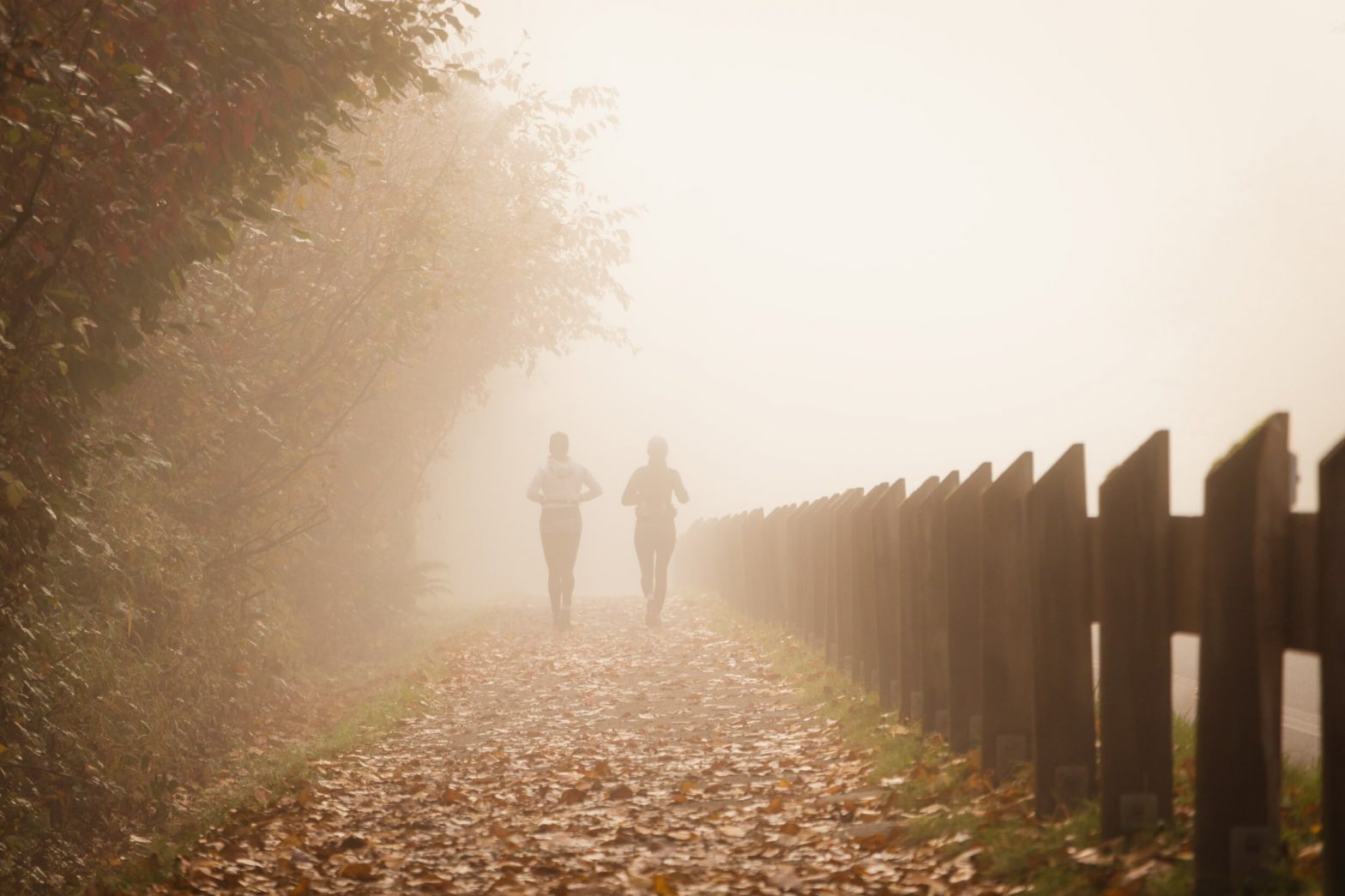Almost any post-menopausal woman will tell you that hot flushes are the tip of the iceberg when it comes to symptoms of the menopause. What’s perhaps more surprising is the likelihood that she will have experienced workplace discrimination, and perhaps even stepped back from her career, as a result.
In August 2020, the British Medical Association (BMA) released the results of a study that gave pause for thought to women in the medical world, and beyond. Out of 2,000 female doctors surveyed, a huge 90 per cent reported that menopausal symptoms – insomnia, fatigue and anxiety, as well as hot flushes – had affected their working lives. A third wanted more flexible workplaces than they had and 47 per cent did not feel comfortable discussing the impact of the menopause on their work with their manager, despite wanting to do so.
The consequence?
“Women may be permanently stepping back from senior positions in medicine – a key cause of the gender pay gap,” Dr Helena McKeown, BMA representative body chair, told the Guardian. “And the health service may be losing highly experienced staff because of inflexibility and lack of support during a relatively short phase of life.”
Supporting senior women should be a priority within the NHS, whose workforce is 77 per cent female, although just 46 per cent of senior management roles are held by women. Currently, 60 per cent of junior doctors are women, who will one day progress to senior roles. And it comes at a time when female NHS staff are reporting record levels of stress and exhaustion at work throughout the COVID-19 pandemic.
But the results of the BMA survey point to a far bigger picture of discrimination experienced by women in all corners of the workforce as they go through menopausal symptoms.
Menopause in the workplace
A survey by not-for-profit healthcare provider Nuffield Health reveals that 72 per cent of female workers experiencing menopausal symptoms feel unsupported at work, with one in 10 considering quitting their job. A staggering 90 per cent feel unable to talk to a manager or colleague about the impact of their symptoms on their ability to work, although one in five have had to take time off work. What’s behind this level of miscommunication?
“People don’t know the basics of menopause, the symptoms, or even when it can happen,” says Lauren Chiren, who experienced early menopause while working a senior role in financial services. She’s now the founder of Women of a Certain Stage, which runs personal coaching and corporate training around the menopause. “If you’re not on your A game in finance, you’re out. I’d have palpitations in meetings with directors, gripping the edge of my chair and zoning out. I ended up thinking I had early onset dementia, in my early 40s.”
For Chiren, as for all the other women interviewed for this piece, there’s a lack of education surrounding the menopause which means that even women in the midst of its symptoms might not be aware what they’re experiencing. In fact, the Nuffield Health study shows that 45 per cent of women fail to recognise they’re experiencing menopausal symptoms when they first develop.
“I honestly thought I had Alzheimer’s, or cancer,” ex-journalist Siobhan Daniels tells me. “I went through this period of having a cotton wool head.” Daniels was working in the newsroom at BBC South East television at the time, where she felt unsupported by her colleagues when she eventually found out that she was menopausal.
“My boss was such a bully,” she remembers. “Being menopausal was seen as a weakness. When I tried to broach the subject in the workplace, it was like they thought it was disgusting, even though it had a detrimental impact on me. I nearly left my job early.”
Media specialist Louise Raven* did leave her job early, when the lack of support from her team and HR department meant that her symptoms of early menopause (at age 38) became unmanageable at work.
“It was October and I was sweating so profusely in the office,” she says. “I asked HR if I could sit by the window to manage my temperature, and was told in no uncertain terms, no. I’d been told I couldn’t have children and it was really upsetting, and then I couldn’t even have a doctors’ appointment without problems from HR, while the other ladies who had children would always have mornings off or four-day weeks. I was shocked at the lack of empathy. I ended up taking voluntary redundancy.”
It’s uncommon for workplaces to have support systems in place for women experiencing the menopause. According to research from diversity and inclusion consultancy Shine4Women, 90 per cent of women say their workplace didn’t offer any kind of support for this stage – despite the fact that flexibility is often more readily offered for other reasons, such as childcare and pregnancy, and small adjustments in the workplace (like sitting near a window, for starters) can make a big difference.
“It comes down to simple things,” says Diane Danzebrink, a psychotherapist, menopause expert and wellbeing consultant. “Getting the right medical support at the right time, being able to confidently approach your organisation knowing they will support you, access to flexible working. Simple adjustments in the workplace, like adequate support for your mental wellbeing, perhaps a quiet space you can use, appointing a menopause champion. Basically, creating a supportive culture.”
The problems getting support from the GP
Workplaces must bring in menopause-friendly policies to support their female employees. But in order for women to know when and how make use of them, they need to have received the right medical support from the GP. Often, the more severe menopausal symptoms that one in four women experience – anxiety, palpitations, depression – are misdiagnosed. One quarter of menopausal women who seek help from a GP aren’t told about the possibility of the symptoms being menopause.
“When I ended up in A&E with menopausal palpitations, the doctor asked if I’d done coke,” one woman tells me on Twitter. It echoes the experiences of menopause publicly shared by American TV personality Oprah, who was monitored by cardiologists as a result of her hormonal palpitations. “We looked for the most dire explanation – heart disease – instead of the most likely,” she wrote. For Danzebrink, who – unbelievably – wasn’t prescribed hormone replacement therapy after a total abdominal hysterectomy, things hit rock bottom: “I started to wonder if life like this was worth living.”
“So many of my friends were prescribed antidepressants instead of HRT,” says Daniels, who swears by EstroGel patches for dealing with aches, sweats and anxiety. “And many are being told by predominantly male doctors that they don’t need it.”
Even when women are identified as menopausal by their GP, they’re often not made aware of the full range of treatment available to them. While the NHS guidelines ‘do not suggest that all, or even most, women with menopausal symptoms should be prescribed HRT’, there’s growing evidence that it can significantly improve a woman’s quality of life – yet a third of women surveyed by Nuffield Health weren’t made aware of HRT by their GP. Of those that were, a third were told it was unsuitable for them.
“Increasingly the evidence shows appropriate HRT to be suitable for many women, with far less risks than previously thought,” says Dr Annie Evans, menopause specialist at Nuffield Health Bristol Hospital. “It is an absolute tragedy that large numbers of women are getting no help at all.” The widespread shortage of HRT patches last year illustrated a fact pointed out to me by senior speciality emergency doctor Dr Cathy Paget: “HRT is not considered a key medicine.”
The situation has been exacerbated by the COVID-19 lockdown, thanks to a number of factors identified by menopause coach and activist Kate Usher. “Stress is difficult to biologically manage during the menopause, and stress exacerbates many symptoms,” she tells me. “While most symptoms are easier to manage at home, the pressure to be present and effective due to concerns over job retention, increases stress levels. Isolation can be difficult at the best of times, however with anxiety, depression and panic attacks being extremely common menopause symptoms, it can be catastrophic. And access to healthcare during this period has been difficult and patchy.”
There’s also evidence that ethnicity and socioeconomic circumstances can play a part in worsening a menopausal experience. The US’s Study of Women’s Health Across the Nation (SWAN), which began in 1996, shows that Black and Latina women reach menopause two years earlier than white women, and are more likely to experience hot flushes and night sweats for longer. “My educated guess is that a lot of the differences have their basis in lifestyle, SES (socioeconomic status), and other stressors such as systemic racism and their long-term consequences,” said University of Colorado School of Medicine professor Dr Nanette Santoro to heath site EndocrineWeb.
What’s going wrong?
When 51 per cent of the population will experience menopause, why is it so routinely missed by GPs?
“In the UK, doctors only have mandatory training in menopause so a lot haven’t heard of it in 20 years,” says Shine4Women co-founder Anna Baréz-Brown. “A 65-year-old male GP doesn’t have menopause in mind.”
“We know from many recently qualified GPs that they had little or no menopause training at all,” adds Danzebrink. “It’s because until the 80s, there was very little pressure for women to be included in medical research. We’ve only ever had two women head up the Royal College of Obstetricians and Gynaecologists. And over the last 30 or 40 years we’ve since an exponential rise in women over 50 in the workplace, so menopause in the workplace is more common now – but society hasn’t caught up.
“Women are referred to cardiologists for heart palpitations, rheumatologists for joint pain, psychiatrists for mental health conditions which are actually to do with changing levels of hormones. The fact is we’re not teaching our medical professionals about this life stage. And our GPs are under horrible pressure. We need to make their job easier by giving them the right education, so when a woman who’s experiencing peri-menopause walks in, they can treat her how she deserves to be treated and it’ll probably save six or seven appointments in the diary.”
Which brings us back to the BMA’s study. Senior female doctors leaving their roles could do even more harm than widening the gender pay gap. There will be fewer woman GPs that have first-hand experience of the menopause and therefore, until GP training on the menopause improves, are able to easily diagnose it in patients.
“If even our medical professionals are struggling to get help, what hope does the public have?” asks Danzebrink. “When there are so few women in senior positions, you don’t get the value of their experience for younger colleagues. It also doesn’t make financial sense for any organisation to lose a team member they’ve spent all that time training and supporting.”
The good news is that over the last few years, women and organisations have begun speaking up about the menopause and its impact on women’s lives, including at work. “In the five years since I started speaking out about this publicly, we’ve seen more unions creating menopause policies, we’ve had menopause debated in the Houses of Parliament, we’ve seen a government report about menopause in the workplace,” says Danzebrink. She’s also played a part in getting menopause on the school curriculum in England, which begins this term. And despite the BMA study’s findings, some NHS staff report a gradual culture shift.
“When I first joined Southampton hospital, I remember saying breaks are for wimps,” laughs Dr Paget. “That’s changed completely. There’s been a big awareness in emergency medicine that it’s a really tough industry, and pressures are increasing. And I’ve been able to renegotiate my contract and work less antisocial hours to help with my menopausal symptoms.”
The expertise of someone like Dr Paget on the team is invaluable. “I say, always bring a menopausal women into a meeting for her amazing perspective,” concludes Baréz-Brown. “An older, wiser counsel. Losing a woman like that in a business is not great. And that’s why businesses should do more to support them.”
*name changed for anonymity


